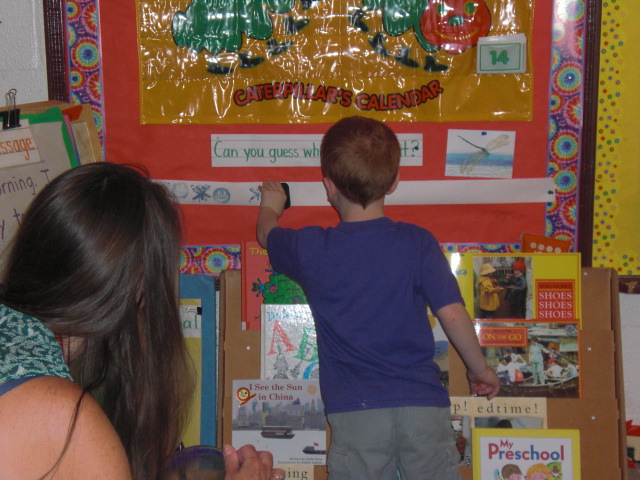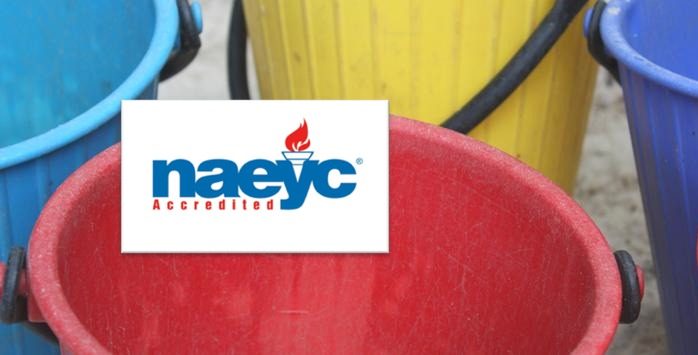In this “FROM THE TEACHERS” post, we’ll discuss how to help your child develop their communication skills, as well as how to open a dialog with your child as they begin to communicate with you.
We’ve all learned in our lives how important it is to communicate effectively with one another. And as adults, we’ve all had lots of practice. It is important to realize that learning to communicate effectively is something that developed over time for all of us and that we can help build the foundation for good communication skills in our children. Even before a child’s vocabulary fully develops, parents can model good communication techniques for young children.
One half of learning to communicate effectively is learning to listen effectively. By being a good listener, you can make it easier for your child to communicate with you. Being a good listener shows you care and respect your child. Your child will feel understood, and you will help your  child learn ways to deal with feelings and problems. A child who feels they are being listened to and heard will be less likely to become frustrated and resort to using methods other than words to try to make someone hear them. By listening, you also show your child how to be a good listener. Being a good listener helps children learn to solve problems together and work out conflicts that arise.
child learn ways to deal with feelings and problems. A child who feels they are being listened to and heard will be less likely to become frustrated and resort to using methods other than words to try to make someone hear them. By listening, you also show your child how to be a good listener. Being a good listener helps children learn to solve problems together and work out conflicts that arise.
Using Active and Reflective listening at early ages can help build the foundation for open and effective communication later in their lives.
With Active listening, the parent takes the time to listen to the child and refrains from giving back his own message to the child. Instead, the parent tries to say what he feels the child meant. For example, beginning your reply with, “It sounds like…” or “You’re saying…” For example, “It sounds like you want to play with the toy that your friend has.” This approach helps the child feel free to talk without being judged. It also shows that you heard your child, even if you aren’t agreeing with them.
Reflective listening also helps your child feel respected, but incorporates your feelings too. For example, “I feel…when you…because…” For example, “I feel happy when you ask for a turn when you want one because it shows me how well you share and how patient you are.” You can offer your child an alternative response if needed to help guide their behavior. This type of listening helps put the responsibility with the child, for instance, by telling your child it makes you happy when they play nicely with friends.
 Children also have feelings that they may not know how to express. Listening for feelings requires both active and reflective listening. It shows you understand the meaning behind your child’s words. Both types of listening begin by showing that you are listening: stop your other activities and get down at your child’s eye level so that you look directly at him/her. After you hear what you child has said, think of words to describe what he is feeling. Try words like delighted, enjoy, appreciate, excited, proud, pleased, annoyed, confused, disappointed, frightened, scared, sorry, etc. By giving words to the feelings, overtime the children will learn to use those words when they need them.
Children also have feelings that they may not know how to express. Listening for feelings requires both active and reflective listening. It shows you understand the meaning behind your child’s words. Both types of listening begin by showing that you are listening: stop your other activities and get down at your child’s eye level so that you look directly at him/her. After you hear what you child has said, think of words to describe what he is feeling. Try words like delighted, enjoy, appreciate, excited, proud, pleased, annoyed, confused, disappointed, frightened, scared, sorry, etc. By giving words to the feelings, overtime the children will learn to use those words when they need them.
Active and reflective listening can also be used when your child uses strong language, such as “I don’t like you!” and “I never get what I want!” By showing your child your heard them and reflecting back what your child is feeling and the suspected reason, you help your child understand his feelings and know that having feelings is okay. When you have told your child that he/she may not watch TV and he/she responds by throwing toys, show that you understand the feeling behind the action: “I can see that you are angry because I said no TV right now, but throwing toys is not allowed.” As always, encourage him/her to use words and help him/her find the words to use by modeling them. The more the words are modeled the easier it will be for the child to use them the next time. Overtime, this will create the foundation for effective communication as your child grows.

